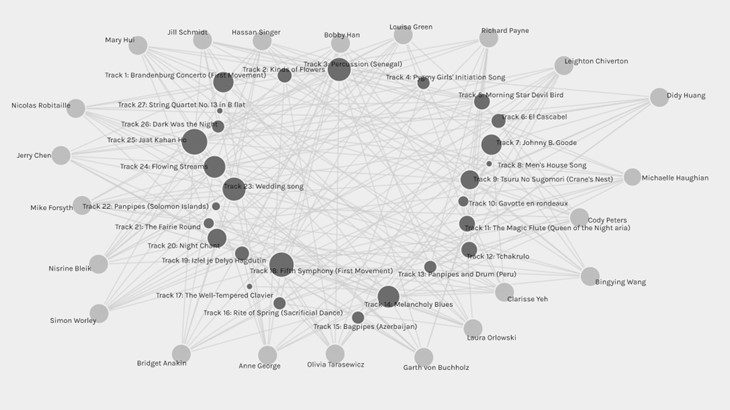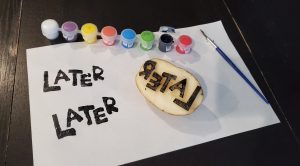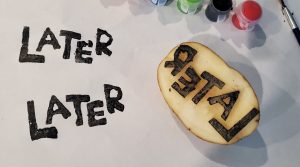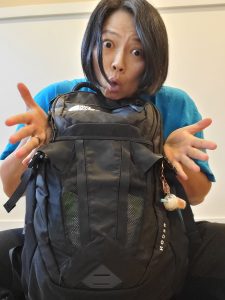
I found this video to be quite enjoyable. Here are my few cents:
[4:07] Dr. Boroditsky talks about how in some languages you have to distinguish between something you’ve heard as opposed to something you saw. Taken to the extreme, it reminded me of a rabbit hole I once went down into when I learned about the Piraha people. To them, the idea of God was ludicrous because of their value in verifiable firsthand experiences. In fact, there was a missionary (Daniel Everett) who went to evangelize to them and discovered that the Piraha people lived in the moment. Their language reflected this as it lacked the grammatical and structural constructs needed to convey abstract concepts like God, Jesus or heaven. As a result, Daniel had difficulty convincing these people that they needed God since they lived for the here and now, and the future wasn’t something of concern. Although it was Daniel who went to change the religious beliefs of the Piraha people, ultimately it was he that ended up being transformed.
[6:41] Dr. Boroditsky she talks about the precise verbs needed to express consumption in the Navajo language based on the specific food type being consumed. I resonated with this because as a learner of Mandarin Chinese, precision of words is very important according to the situation. For example, recently I was talking to a friend about “correcting” my spoken Chinese when I make a mistake. I used the word, 改正 (gǎi zhèng) which applies to correcting homework but not for correcting a person’s speech. Instead, I should have used 糾正 (jiū zhèng). Meanwhile, the dictionary does not distinguish between the two and are both “correct”. See what I did there? LOL. So in my experience, in order to learn a language properly, one has to get the sense of the language, or the feel of the language as opposed to translating from your native tongue.
[8:19] Dr. Boroditsky posits the questions, “Is it true that speakers of the world tend to the world differently? To what extent do language and culture guide what we see in the world?” This reminds me of a book I once read (Cold Case Christianity) that discussed the difference in details that people pay attention to depending on what they deemed significant. A detective talked about how different eye witnesses of a crime may report conflicting details and it was his job to piece together the truth. One person may have paid more attention to the getaway vehicle (model and make) while another person may have paid more attention to details of the perpetrator’s clothes. He recalled an instance where he was once called to a crime scene on a rainy day but he was an hour away. He told the police on scene that he’d arrive within the hour. Out of a kind gesture, the rookie cop tending to the eye witnesses allowed them to sit together in the back of his police cruiser due to the heavy rain. When the detective arrived, he was upset because witnesses’ individual messy accounts are of more value than 3 identically detailed accounts as they all discussed this in the backseat of the police car and came to a consensus as to what happened. It was his job to sort out the messy details to piece together the truth. Perhaps it is the same way with language that to truly understand an event of some significance, we need multiple accounts in different languages to get a complete picture of what happened since different languages pay attention to different aspects of the truth which inevitably shape our thoughts. Dr. Boroditsky mentions this again at [32:21] in the case of the balloon popping experiment where based on the language structure, English speakers correctly identified who popped a balloon while Spanish speakers could identify who popped the balloon accidentally.
[13:22] Here Dr. Boroditsky mentions how time in Mandarin is expressed in a vertical axis. I had to pause and think about that because it never occurred to me consciously! “Last time” is literally “up time” (上次shàng cì) and “next time” is “down time” (下次xià cì). The same applies to “last week” as “up week” (上個星期 shàng gè xīngqí) and “next week” as “down week” (下個星期xià gè xīngqí). Fascinating! I had never really concluded that time was expressed in a vertical access as I got the sense of what they meant and left it at that.
[19:00] Dr. Boroditsky starts talking about how some languages only have a few words for colour while some place different boundaries for colour. This immediately reminded me of the many ways the colour white is expressed in the Inuit language. Upon fact checking, it turns out it wasn’t for the colour white but rather for the word “snow”. Also, it turns out this too is a common misconception, that there are unusually numerous variations of the word “snow”. Whoops! The second thought that came to mind was concerning the Piraha people of the Amazon Rainforest in Brazil. As a math teacher, I was fascinated with their lack of numeracy. In addition to learning about their aversion to numbers, I also found it interesting that they do not have any unique words for colour. Instead, they describe colour through adjectival comparisons. For example, a “red bird” could perhaps be expressed as “blood-like bird”. This just blew my mind!
[33:37] Dr. Boroditsky says, “The kind of language that swings around you, the grammatical forms that swing around you in your environment change what you attend to even when you’re looking at new events unrelated to what you’ve just been hearing about.” This just brought back thoughts of how media bombards us with what they want us to pay attention to and how it affects our thoughts in the same way which then also reminded me of a quote I once heard but can’t seem to place its source. I remember it crudely as “If you want to control people, use guns. If you want to control minds, use media.”
[42:24] Here Dr. Boroditsky relays the hilarious story of how words marketed differently affect the bottom line in large prunes versus dried plums. Diction can evoke a strong emotional response that ultimately affects consumer spending habits. For the same reason, I think humorists take advantage of such word play in order to elicit the most laughs. I immediately think of Nathan W. Pyle, creator of Strange Planet whose simple pastel alien characters use sophisticated synonyms to describe normal everyday conversations that result in awkward hilarity.
[43:32] Dr. Boroditsky asks, “Can language really change thinking?” but she also answers it back at [18:30] with “When you teach people to talk a new way, you teach them to think a new way as well.” This brings back my affinity for traditional Chinese characters because of the richness, depth and historical connection I feel with them. Visually, each character is like a stunning painting of aesthetic beauty and as a cartoonist, I am drawn to this (haha). Take for example the Chinese character for “love”. In the traditional character (愛 ài) there is “heart” (心xīn) within it but its simplified version used in China and most parts of the world, the “heart” disappears and instead it’s written as 爱. It is unfortunate that the connection to its poetic significance is lost due to the Cultural Revolution!
[51:21] Finally, Dr. Boroditsky quotes Bernard Shaw, “The biggest problem of communication is the illusion that it has occurred.” I had a good chuckle as I can relate to it when I think about text wars with my husband over our 14 years of marriage. Sending a message does not equate to a message received. Receiving a message does not equate to a transmitted message without misinterpretation. All communication is subject to the lens of interpretation which is greatly impacted by anger, hunger or fatigue among other things.



















